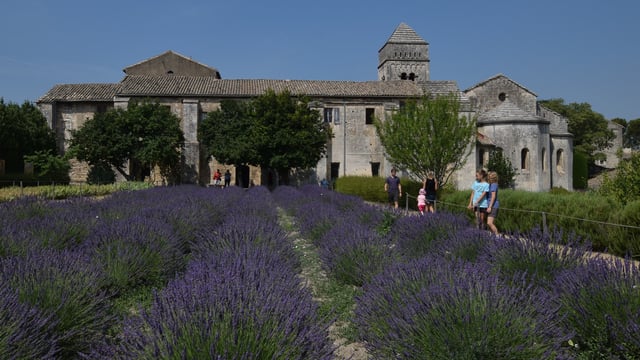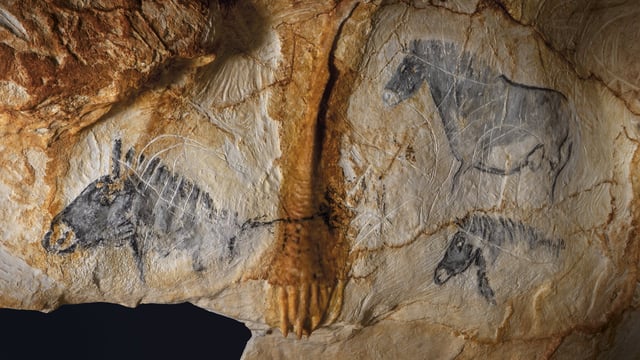Provence-Alpes-Côte d’Azur
Art, History & Archaeology Sites & Museums
In the southeast of France, Provence, or Provence-Alpes-Côte d’Azur, has 900 kilometres of Mediterranean coastline from the Rhône Valley to the border of Italy, that rise up to the southern Alps. A number of the region’s cities, including Avignon, Aix-en-Provence, Marseille and Nice, attest to the area’s rich Roman and Medieval histories. There are five departments in the Provence-Alpes-Côte d’Azur region, they are: Alpes-de-Haute-Provence, Hautes-Alpes, Alpes-Maritimes, Bouches-du-Rhône, Vaucluse.
Archaeology & History Sites in Provence-Alpes-Côte d’Azur
Arles Amphitheatre
One of the major attractions in Rome, the Arènes d’Arles was built by the Romans in the 1st century AD and is still used for entertainment today, as a venue for bullfighting during the Feria d’Arles in September and various musical events over summer. Although the structure is obviously Roman, it was modified during medieval times. The two towers are what remains of the amphitheatre as a fortress that up until the 18th century protected some 200 houses. These were removed in the 1820s.

Arles Obelisk
An uninscribed obelisk made of red granite and brought to France from Egypt by Constantine I. Arles was one of Constantine’s favourite cities, and here he built baths and an impressive amphitheatre – so well preserved it is still in use today. The obelisk was placed on the spina of the circus – the remains of which can still be seen near the archaeology museum. In late antiquity the obelisk fell and broke in two. Rediscovered in 1389, it was later re-erected in the centre of the Place de la République by Louis XIV.

Barbegal Aqueduct & Mills
Just north of present day Arles are the remains of what are thought to be the largest remains of a mill complex from antiquity. An aqueduct that supplied Roman Arles (Arelate) with water was also use to drive 16 water wheels to produce flour. Dating to the 2nd and 3rd centuries AD, the substantial roadside remains include water channels, foundations of the individual mills, as well as the staircase rising up the hill on which the mills were built.

Flavien Roman Bridge
Despite the rather unassuming setting, le Pont Flavien is said to be one of the most beautiful Roman bridges outside of Italy. Certainly it is unique in France in that it has a pair of ceremonial arches at either end, each with a pair of crouching lions on top. The bridge has suffered much since it was built, but each time it has been painstakingly reconstructed. The parapets are modern, and only one of the lions is original. But still, anyone who is fascinated by Roman engineering should not miss it. It is thought that the bridge was as much a funerary monument as it was functional.


Glanum Archaeological Site
The ancient town of Glanum started out as an Iron Age oppidum at about 500 years BC. During the 2nd century BC the town became substantially Hellenised as a result of contact with the Greeks settled in Marseilles. After the defeat of the Gauls during the 1st century BC until the 3rd century AD Glanum was an important town with numerous religious and civic monuments being constructed.

Les Antiques
Over the departmental road (D5) from Glanum archaeological site are two large Roman monuments known as Les Antiques. One is a mausoleum the other a triumphal arch. The cenotaph, is not only a unique example of Roman funerary architecture it is also very well preserved. It was built sometime between 30 and 20 BC for a wealthy Gallo-Roman family. The nearby arch was erected in 20 AD to commemorate Caesar’s conquest of various tribes of Gauls. Two striking examples of monumental Roman architecture.

Monastery of Saint-Paul de Mausole
For about 1,000 years there has been a monastery near the archaeological site of Glanum. And for much of this time the community of monks has been known for taking in people with mental illness. The convent was nationalised after the French Revolution, and in 1807 it was sold to a doctor who then established a psychiatric asylum. On 8 May in 1889 Vincent Van Gogh was admitted, staying until 16 May 1890. Besides seeing his room, there is a walking tour of the gardens showing where he made some of his finest paintings. Also, a great place to see lavender.


Montmajour Abbey
A fortified but ruined Benedictine monastery on the outskirts of Arles. The complex of religious architecture has its origins in the 10th century with additions throughout the centuries until the 18th century. Visitors can see the 11th century hermitage Chapel of St Peter, the 14th century fortified monastery with Romanesque sculpture in the cloister, as well as the ruins of the 17th century Maurist monastery, amongst other features. Including rock-cut graves dating to the period between the 11th and 14th century.

Palais des Papes
For most of the 14th century Avignon was the seat of Western Christianity. The Palais des Papes is in fact two conjoining Papal palaces: the Palais Vieux and Palais Neuf. Together they make up the largest Gothic building in Europe, and one of the most important. The Episcopal complex, the 12th century bridge and the historic centre of Avignon were added to the UNESCO list of World Heritage Sites in 1995.

Pont Julien
Until 2005, nearly two thousand years after its construction, Pont Julien was still used for cars and other light vehicles to cross the River Calavon. Now, it is restricted to motorbikes and pedestrians. The Roman stone arch bridge was built in 3 BC, without the use of any cement. An interesting feature is the use of openings on the supporting columns to allow floodwater to pass through reducing the potential of destruction. It was situated on the Via Domitia, and is now the only Roman bridge that is both in tact and still in use along that ancient Road.

Museums & Art Galleries in Provence-Alpes-Côte d’Azur
Cosquer Méditerranée
Opened in June 2022, Cosquer Méditerranée is home to the recently created replica of Grotte Cosquer. The submerged entrance to the cave of Cosquer was discovered in 1985 but the Ice Age art, both paintings and engravings, were only found by divers in 1991. The first human occupation of the cave was about 30,000 years ago, and the last around 19,000 years before the present. This new facility tells the story, history and archaeology of Cosquer Cave. After taking a lift to the replicated submerged entrance 37 below sea level, visitors board exploratory vehicles and take a guided tour, available in 6 different languages, to explore the replica of the ‘underwater cave’ on a journey that takes 35 minutes.

Fréjus Archaeological Museum
With Fréjus’s rich archaeological heritage, particularly from the Roman period, there are a number of ongoing excavations in the city. Many of the finds recovered from these excavations are displayed in the municipal archaeology museum, and are arranged thematically to give an idea of what life was like during the Roman period of the city. In the sculpture gallery there are a number of striking pieces, including a large, very well preserved floor mosaic. Pride of place, however, is given to the double headed bust of Hermès, now the symbol of Fréjus.

Musée Départemental Arles Antique
Also known as the Musée de l’Arles Antique, it is situated at the end of what was the Roman circus – parts of which can still be viewed. Although the focus of the museum’s exhibitions date to the Roman period in Arles, there are collections on display from the Neolithic to Late Antiquity (from the 4th to 6th centuries AD). There are some extraordinary artefacts on display, including many exquisite mosaic floors, a bust of Caesar and the recently excavated boat. A must visit before exploring Roman Arles.
















